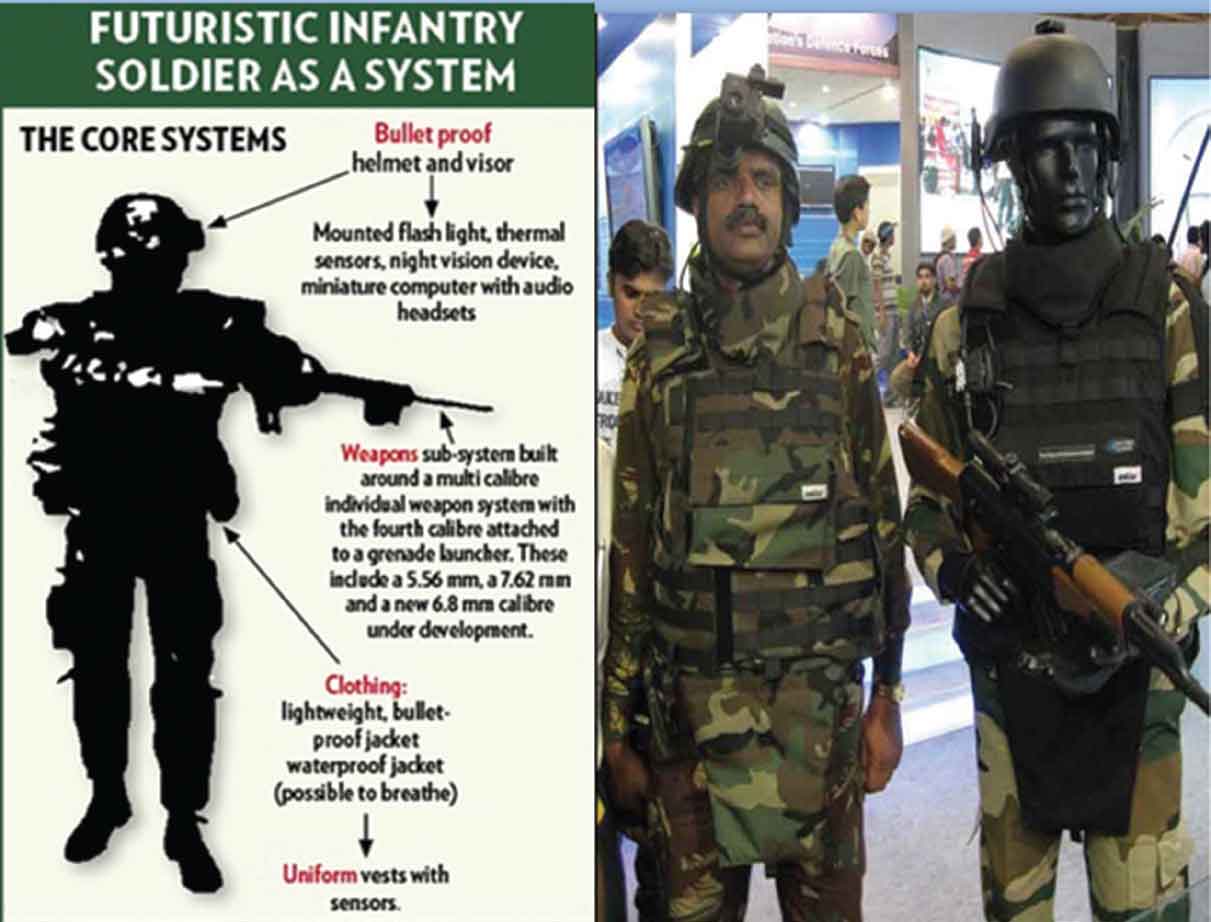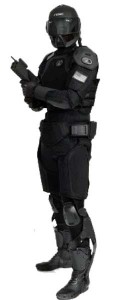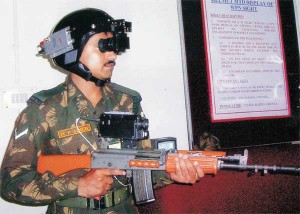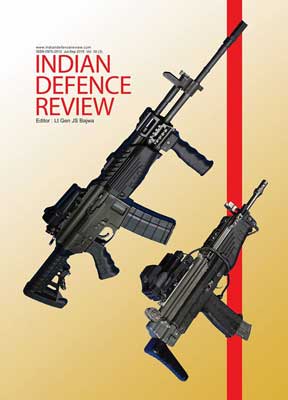The future of the F-INSAS today is at the crossroads where the Weapons Sub-System and Body Armour and Individual Equipment Sub-System have made tangible progress and gradually, the basic weapons and BPJs, Ballistic Helmets along with other accessories over a horizon of two to five years would find their way in to Infantry Battalions. But the same may not be true for its Night Enabled Operations capability and its ability to operate seamlessly in a net-centric operational scenario; which is still a distant reality. The progress of Project F-INSAS is being carefully monitored by most advanced armies and it needs to be pursued by the Indian Army as an integrated, not piecemeal, effort.
Pursuance of the Soldier Modernisation Programmes is necessitated as the modern battlefields are becoming more and more multi-dimensional…
The basic concept behind all Infantry Soldiers Modernisation Programmes (SMPs) in the modern and evolving armies is that the Infantry soldier continues to be the focal point in all operational scenarios under varying terrain conditions. Infantry mission spectrum is wide and complex; that warrant enhanced capabilities, to sustain him in high tempo mobile operations, in difficult unfamiliar terrain conditions and while he operates in urban areas under extreme climatic conditions and ever present asymmetric threats.
The most significant of the Solider Modernisation Programmes are the Land Warrior of USA, IdZ-ES of Germany, FIST of UK and FELIN of France. At this juncture, most of these programmes are still in nascent stages of implementation and only some of them are in the stage of advanced planning of design and implementation.
- SMPs commenced in 1993-1994 with USA, UK and France as pioneers, as on date more than 21 armies world over including India are pursuing these programmes.
- After R &D of almost 20 years even the pioneers are still developing prototypes and upgrading their original system architectures.
- Close to 1,000 Land warrior systems were deployed with Stryker Brigade Combat Team in Afghanistan from 2009 onwards for evaluation.
- One Field Formation (Division) each of UK, France and Italy likely to be equipped by 2016-2018.
- While the main challenges are weight reduction and power consumption, the interoperability with various other systems operating in the same theatre of operation is of great concern.
All “Soldier Modernisation Programmes” seek to empower the dismounted soldier with every conceivable piece of electro-optical situational-awareness enhancing kits…
Pursuance of the Soldier Modernisation Programmes by global armies is necessitated as the modern battlefields are becoming more and more diverse, multi-dimensional, highly lethal, characterised by high tempo of operations that are transparent and net-centric. All this happens against the backdrop of ever increasing threat of the looming asymmetric warfare. While operating under these complexities a soldier definitely needs to be empowered with emerging technologies.
All seemed poised for rapid development, at least in some countries but the process and the pace of modernisation was an arduous one. Some of the main reasons that retarded this process are the need to wait for the advent of certain technological breakthroughs and the usual financial constraints combined with the more recent emergence of the so-called ‘urgent operational requirements’ for contingents deployed in various theatres of operation slowed down many of those programmes.
Contrasting approaches have been adopted in pursuing these programmes; while most the Europeans have selected one leading agency responsible for integration, but the others, especially the United States, left this task to the military. Various SMPs have reached different levels of maturity taking different developmental routes. Indeed, some involve full integration of all the sub systems that have been developed from the ground up, while others chose a more conservative approach, contemplating integration of existing or the legacy equipment. Most of them, however, agree with the necessity of integrating dismounted soldier through vehicle platforms to the overall architecture of Command and Control.
All “Soldier Modernisation Programmes” seek to empower the dismounted soldier with every conceivable piece of electro-optical situational-awareness enhancing kits along with the much required lethality, sustainability and ever needed protection.
- Lethality.
- Situational Awareness.
- Sustainability.
- Protection.
F-INSAS Programme
Conceived in April 2005 as part of the Infantry Vision 2020, the Indian Army’s Future Infantry Soldier as a System (F-INSAS) aims to harness the advanced cutting edge military technologies that would enhance the operational capabilities of the Infantry soldier and enable him to operate across the entire spectrum of conflict. The F-INSAS perceives a multi-mission, multi-role war fighter who is part of the system that contains numerous modular integrated sub-systems.
The future Infantryman will be provided with effective sensor-shooter interface…
Objectives of the F-INSAS Programme
The concept focuses on the need to provide infantry soldier with enhanced capabilities in terms of lethality, survivability, sustainability, mobility, communications and situational awareness. The future Infantryman will be provided with effective sensor-shooter interface; each soldier is integrated with his Section, Platoon and Company. Needless to say, the entire soldier system would be user friendly, not only with regard to what is delivered but how each component is used in conjunction with other components.
Future Needs
With the ultimate aim that infantry soldiers are equipped with the best of the weapons and equipment, have the best of the Battlefield Support Systems that would connect the soldiers 24×7, all weather in a network-centric battlefield of tomorrow and enable the soldiers to sustain themselves in a challenging tactical environment in the dynamic battlefield with a matching mobility to move about the battlefield with accompanying load to execute assigned missions.
Basic Tenets
- Light Weight, Small Size Systems.
- Consistent Performance in All Weather, All Weather, All Terrain and Day & Night.
- Low Power Consumption to increase Sustainability.
- Cost Effectiveness of the System.
F- INSAS: System Of Systems
Project F-INSAS has conceptualized sub-systems that are in various stages of fructification:-
- Weapons Sub-System.
- Body Armour and Individual Equipment.
- Target Acquisition Sub System.
- Computer and Communication Sub System.
Weapon Sub-Systems
Robust, highly reliable, modular and simple weapon systems to include CQB Carbine, Multi-Calibre Assault Rifle and LMG. The weapons would to required modular, scalable with capability to take on various attachments like UBGL and the latest generation of weapon sights.
Today, the troops engaged in Low Intensity Conflict are without a Close Combat Weapon…
Body Armour And Individual Equipment
- Modular Bullet Proof Jackets to provide protection to vital parts of the body. It will have add-on inserts to protect front, sides, back, throat and groin. The ballistic helmet will be lightweight and comfortable, made of advanced materials to provide ballistics protection to neck and ears as also facilitate use of headset for communication radio.
- The Modular Individual Load Carrying Equipment (MILE) would include a Harness, Rucksacks and Hydration Pack.
- The survival kit comprising the Soldiers Personal Kit, Elbow and Knee Pads, Multipurpose Tool and First Aid Kit shall form part of the sub-system.
Target Acquisition Sub-System
- Night Vision Device.
- Weapon Sights.
- Hand-Held Target Acquisition Device.
Computer and Communication Sub-System
- Shall comprise a soldier wearable computer, which is lightweight and battle rugged with a display and the Software Defined /IP based Radios for communication. It will also facilitate power management and integration of all sub-systems of F-INSAS.
- The essentials of a Computer and Communication sub-system would be a soldier-wearable computer, Single/Dual Band IP/ Software Defined Radio, Sensors for Blue Force tracking and Power Management.
- The soldier will not be overburdened with needless amount of data. He will only get what is needed in the format that he understands without any delays and rest would get automatically discarded.
Going by the current trends, the earliest the Infantry can receive the first lot CQB Carbines maybe some time in 2017…
Reality Check: F-INSAS
Weapons Sub-System
CQB Carbine: The Indian Army’s authorisation of the number of carbines is approximately 3,85,000 which is divided into CQB Carbines and the Protective Carbines. The CQB Carbines, mainly for the frontline troops are authorised approximately 1,68,000 and Protective Carbines – about 2,17,000. The five versions of good old Carbine Machine 9 mm were rendered obsolete more than ten years ago. Today, the troops engaged in Low Intensity Conflict are without a Close Combat Weapon. Despite the operational void of a critical weapon for close combat battle, the global tender for CQB Carbines issued in December 2010 is yet to see the light of day.
Approximately 45,000, CQB Carbines and its ammunition along with Reflex/Holographic Sights and Visible and Invisible Laser Spot Designators are under procurement at an estimated outlay of Rs 4,000 crore; the procurement is with ToT of the CQB Carbine and ammunition being purchased. Leading global arms manufacturers are vying with each other and despite the fact trials going on for almost three years. No decision is forthcoming on the outcome of the trials. It is learnt that all types of trials have been concluded more than six months back but the Army HQ has not been able to complete the last stage of the trials namely the General Staff Evaluation.
There could be many impediments that are delaying the GS Evaluation but procrastination is not going to offer any solutions. The Infantry Soldier deserves a CQB Carbine without any further delay. It is safe to assume that going by the current trends, the earliest the Infantry can receive the first lot CQB Carbines maybe some time in 2017 and the indigenous production by OFB will not commence before 2020. The CQB Carbine would therefore not be complete without Night Sight which is still a distant reality.
The Protective Carbine being co-developed by DRDO/ARDE and OFB for the rest of the Army is a distant dream. Such combined developmental route is always fraught with dangers. This Carbine being co-developed is, in fact, a hybrid of many prevailing designs. Lack of synergy between the two agencies has resulted in the Carbines not being ready for field trials.
Multi-Caliber Assault Rifle: The failure of the INSAS Rifle 7.62 mm has been highlighted in many fora. The Indian Army views it as an operational necessity to have an Assault Rifle that would enable its soldiers to combat the menace of counter insurgency operations as well as have an Assault Rifle for conventional roles. This has led to the concept of an ambi-dextrous Assault Rifle that was Multi Caliber – 5.56 X 45 mm & 7.62X39 mm, firing NATO SS-109 and 7.63X39mm ammunition, with modular inter-changeable parts in the field without usage of tools with facility to mount breach loaded UBGL. The Assault Rifle is being procured along with Reflex/Holographic Sights, Telescopic Sight, Visible Laser Pointer and the UBGL. The weight of the Rifle less optical sights and bayonet will not be more than 3.6 kg and the UBGL will not weigh more than 1.5 kg.









Indian Army should first find out ways and means to fight against terrorists without any loss of life in the Army side. India is not going to attack any neighboring countries. Where as USA and Western countries planning is based on the principle of attacking other country. So there is no point in imitating them. But the defense officers always try to follow them. For Example:- Why do we require three Air craft carriers. Now all are white elephants.